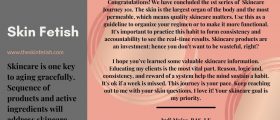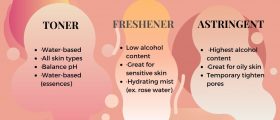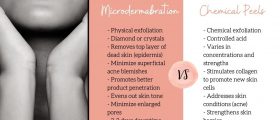I’m certified to Save a Life!
by Judi Moise | Posted: May 18, 2017 | Skin Condition,UV Rays & Sunscreen
Skin Fetish is now certified to Save a Life!
How can I save your life?
Aestheticians, massage therapist, hair stylist, barbers and other beauty/wellness professionals are in a unique position to spot suspicious moles. Beauty professionals are familiar with their clients and are able to see changes in areas that’s hard to see such as the neck, scalp and back. These are areas that can go unnoticed by the clients. My job as an aesthetician is to make clients aware of any changes of suspicious moles that may be cancerous.
What is Melanoma?
Sun cancer is being reported at an alarming rate. Even though basal cell and squamous cell carcinoma are the most common forms, the deadliest type of skin cancer is malignant melanoma. Melanoma is the deadliest because it forms where the cells produce pigment, or the melanocytes. This is located where the dermis and epidermis meet (the junction). Melanoma starts when a cell or a group of cells grows uncontrollably and produce cancer cells, invading more tissue that spreads to other organs.
Melanoma start as a mole on a new spot. It can be as small as a pinhead and can grow larger over time. As taught in esthetics school, I follow the ABC’S of changing moles that can be suspicious of melanoma
- Asymmetrical
- Border
- Color
- Diameter
| A. Asymmetry
One half of the mole is unlike the other half. |
|
| B: Border
The border of the mole is irregular, scalloped, or poorly defined. |
|
| C: Color
The mole is varied from area to another. There may be shades of tan and brown and black and sometimes even white, red or blue. |
|
| D: Diameter
The diameter of the mole is larger than 6 mm (as a rule), which is the same diameter of a pencil eraser. |
|
| E: Evolving
Ordinary moles do not change over time. A mole that changes in size, shape, color, or texture is a warning sign as is a mole that tingles, itches, burns, bleeds, oozes, or feels strange. Another warning sign for melanoma is a sore that does not heal. ANY changes to ANY moles in ANY way should be evaluated by a doctor immediately! |
Who’s at risk?
We all are. People any age, any race can get it. Some have higher risk than others:
White males over 50
- On the back (most common)
- Moles on scalp
- Has the highest mortality rate
o Age 15-29 is the 2nd highest
Family history
- Genetics
- Melanocytic nevi (birthmarks, moles)
UV Rays
- UVA- mostly found in tanning beds
- UVB- sunburns
How can I protect myself and my family?
- Request an annual skin cancer screening from your family doctor.
- Use sunscreen daily and apply as needed.
o Physical blocker: Sunscreen that contains Zinc oxide. Image Skincare has paraben free and non-toxic SPF. For a more organic/vegan approach, Block Island Organics is a great choice.
o Chemical blocker: mostly found in make-up. Don’t solo depend on this due to low SPF
o UPF (Ultraviolet Protection Factor) clothing: Sun protection built in the clothes
- UPF detergent, yes detergent, is available. Rit Sun Guard Laundry Treatment UV Protectant give a UPF protection of 30
Certified beauty professionals are not my doctor, so why should I listen?
Fact: Clients visit their beauty professionals on the average of 6 weeks, far more frequent then seeing their doctor.
Beauty/wellness professionals are the first line of defense to notice any changes. People visit their doctors probably once or twice a year. Same goes for seeing a dermatologist. By that time, the diagnosis may be too late.
Remember: Melanoma can be curable if caught at its early stages. This is how I can save your life.
-Judi
















Leave a Reply
Be the First to Comment!